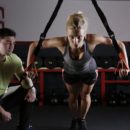Measure Your Pulse During Training, Your Body Will Thank You

During training, the heart rate is an indicator of the physical condition to know and control the level of effort in the exercise we perform. It is therefore important that you measure your pulse and in this article, we will tell you what the most common mistakes you should avoid are.
The heart is an extremely hardworking body and the most important in the body. We measure the rhythm of our heart to know our physical condition. This is what we know as heart rate, which translates into the measurement of our heartbeats measured in pulses per minute. Therefore, this time we will talk a little more about the pulse or pulsations. The heart rate varies according to physical activity.
The pulse is the reflex through the artery of systole (contraction of the heart); it is not the same as the heart rate; however, when taking the pulse we obtain the heart rate of a person, read by heart rate to the number of pulses counted by Pulse Oximeter in one minute.
The heart rate considered within normal is 72 beats per minute in a healthy person and at rest; the heart rate varies from person to person, but in athletes something very peculiar happens, the ability to pump blood from the heart to the whole body is greater in an athlete than in a sedentary person, therefore, with fewer cardiac contractions (pulses) all the oxygen necessary for the body can be obtained.
Anatomical areas to take the pulse
The most common is to obtain the radial pulse that is just on the wrist in the direction of the thumb. Another area that is easy to locate is the pulse of the carotid artery, which is located in the lateral parts of the neck.
There are other points where you can find the pulse using a Finger Pulse Oximeter, which we will only name because it requires a lot of training to locate them:
- Humeral: it is in the fold of the elbow (inner part of the arm).
- Cubital: is located on the wrist in the direction of the little finger; It is weaker than the radial pulse.
- Femoral: it is a very strong pulse and it is located in the middle part of the groin of both legs.
- Popliteal: of difficult location and is just behind the knees; It takes a lot of training to locate it.
- Pedio: it is on the anterior aspect of the foot, that is, palpable between the first and second metatarsals.
- Posterior tibial: it is located just behind the internal malleolus (internal ankle).
- Peroneal: it is located between the two previous ones, and it is difficult to locate.
Common errors in measurement
The pulse should be taken with the index and ring fingers since the thumb has its own pulse, therefore, we can get confused and measure our own pulse and not the patient’s.
The heart rate is extremely important when exercising because through it we can establish the intensity of the exercise we perform; however, it is difficult to run and take the pulse, but this is facilitated with the help of a cardiac monitor, a very safe and accurate device when taking the pulse.
Pulse and cardiovascular exercise
Dynamic activities cause the body to demand more oxygen. The pulse accelerates and the blood flow directed towards the muscles increases.
The most effective way to detect variations in cardiovascular activity is to measure the pulse before, during and after performing any physical activity, in order to notice an anomaly in the heart rhythm. It is normal for the pulse to increase during dynamic physical activities. The greater the fitness, the faster the pulse goes down.












